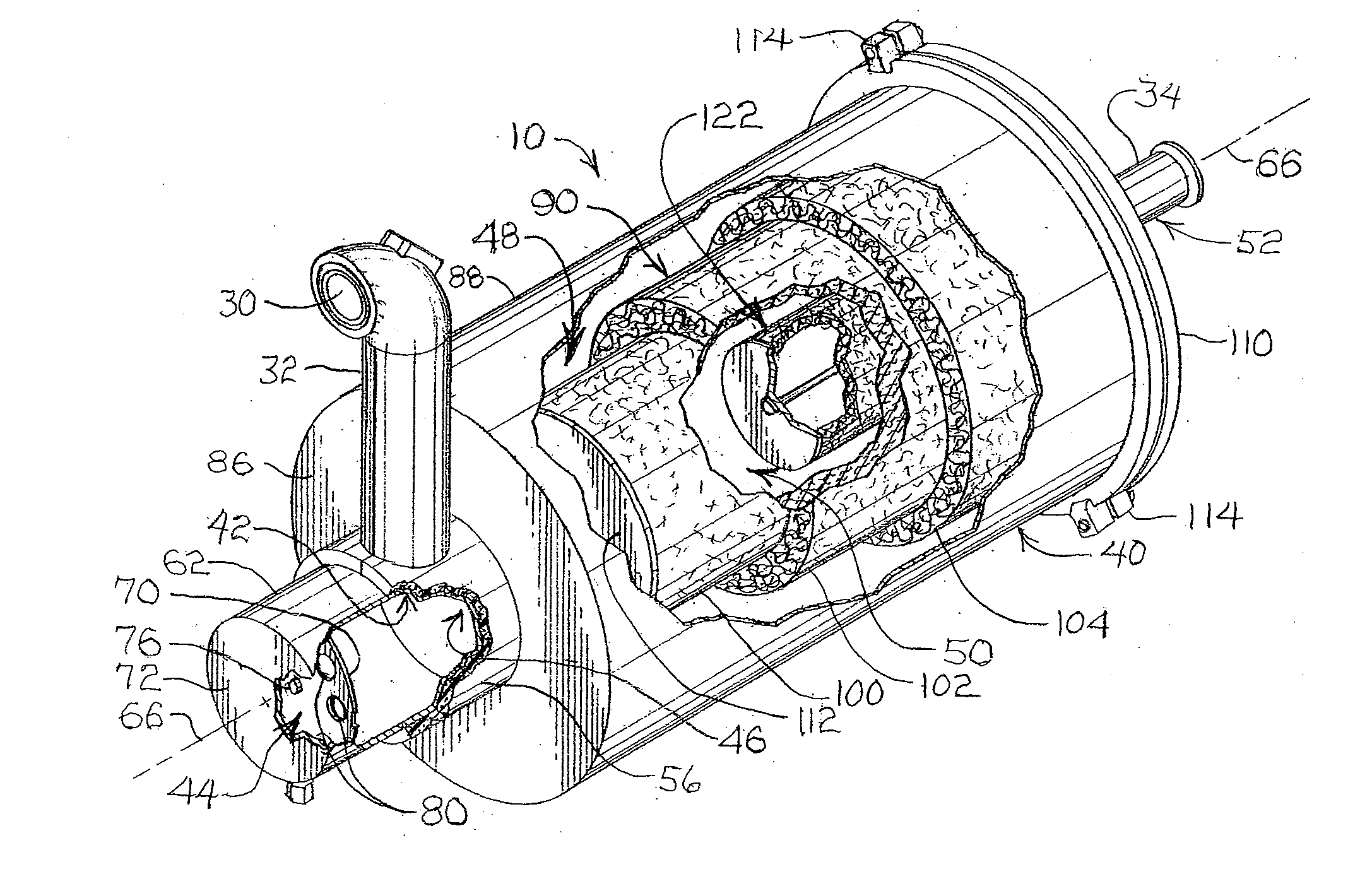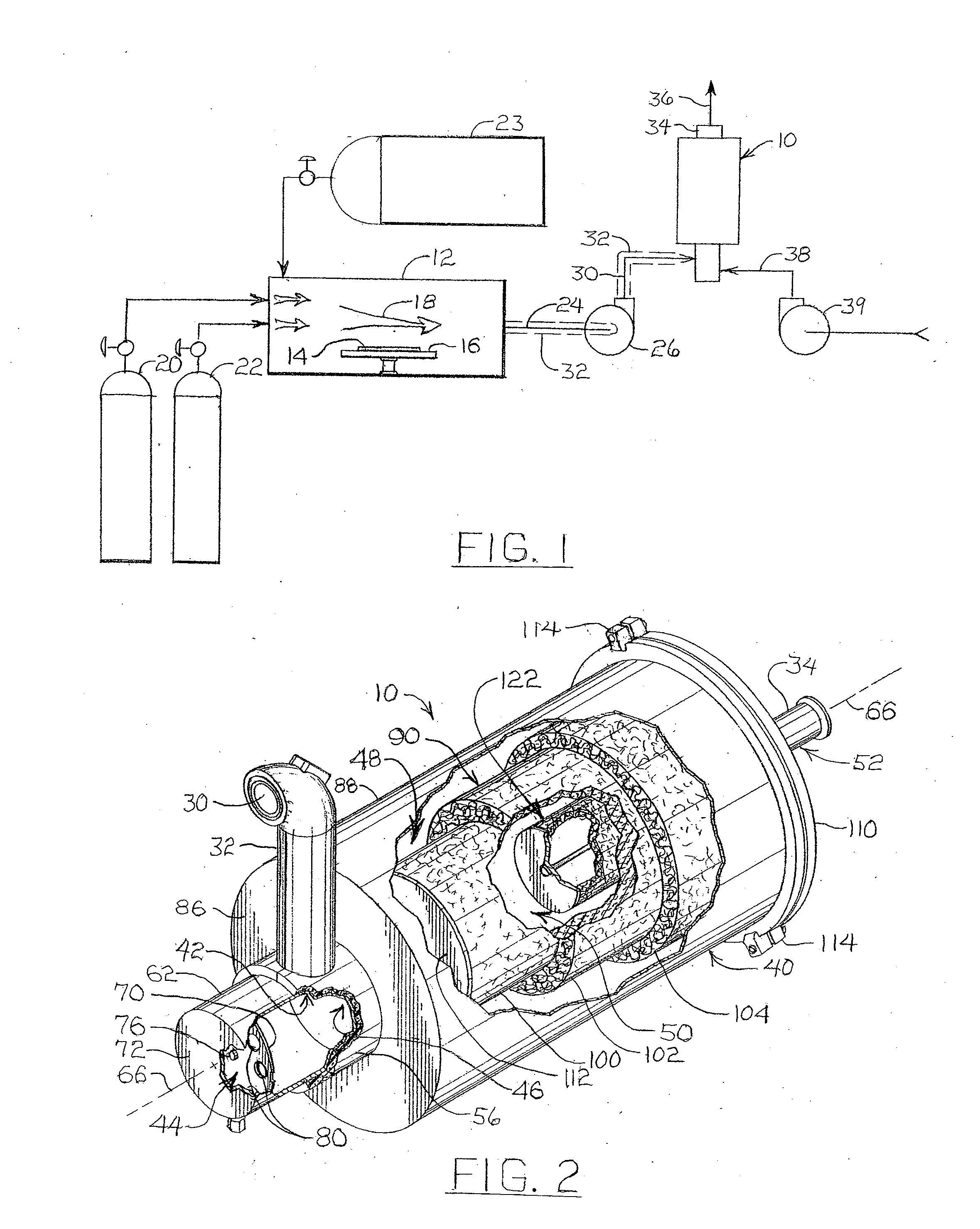Reactive chemical containment system
- Summary
- Abstract
- Description
- Claims
- Application Information
AI Technical Summary
Problems solved by technology
Method used
Image
Examples
Embodiment Construction
[0053]An example reactive chemical containment device 10 is shown diagrammatically in FIG. 1 in the exhaust system of a typical thin film deposition system as one example implementation of the invention, but recognizing that the invention as recited in the features below can also be implemented in other ways with myriad variations in details, once the principles of the invention are understood from the description herein. This example implementation of the reactive chemical containment device 10 is shown in the isometric view in FIG. 2 with several visual cut out portions of the exterior housing and external components to reveal internal components for convenience, whereas the side elevation view of the device 10 in FIG. 3 conceals the internal components but provides the visual orientations 4-4 and 5-5 for the cross-sectional views in FIGS. 4 and 5, respectively.
[0054]With reference first to FIG. 1, a typical thin film deposition reaction chamber 12 is shown with a substrate 14 pos...
PUM
| Property | Measurement | Unit |
|---|---|---|
| Length | aaaaa | aaaaa |
| Flow rate | aaaaa | aaaaa |
| Diameter | aaaaa | aaaaa |
Abstract
Description
Claims
Application Information
 Login to View More
Login to View More - R&D
- Intellectual Property
- Life Sciences
- Materials
- Tech Scout
- Unparalleled Data Quality
- Higher Quality Content
- 60% Fewer Hallucinations
Browse by: Latest US Patents, China's latest patents, Technical Efficacy Thesaurus, Application Domain, Technology Topic, Popular Technical Reports.
© 2025 PatSnap. All rights reserved.Legal|Privacy policy|Modern Slavery Act Transparency Statement|Sitemap|About US| Contact US: help@patsnap.com



